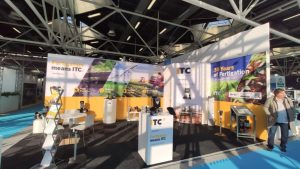Advantages of Discontinuous Volumetric Fertigation
Optimized Nutrient Absorption
- Plants first absorb water with a lower saline concentration, which facilitates the assimilation of essential nutrients.
- Fertilizers applied in small, distributed doses prevent root stress caused by excess salinity.
Reduced Fertilizer Loss
- By avoiding a single fertilizer application, nutrient losses through leaching into the subsoil are minimized.
- This method is more efficient, as the fertilizer precisely reaches the root system.
Reduced Environmental Impact
- It reduces the risk of groundwater contamination, improving crop sustainability.
Better Plant Development
- Nutrients are distributed more evenly over time, ensuring healthy and continuous growth.
Higher Economic Profitability
- Optimizing fertilizer use reduces operational costs and improves crop yields.
Recommendations for Implementation
Recommended Dosing Systems
Use devices such as Venturi injectors or constant-flow dosing pumps to ensure precise fertilizer delivery.
Increase Irrigation Blocks
It is preferable to carry out more frequent fertilizations with lower concentrations, distributing the fertilizer during each irrigation session to maximize benefits.
Discontinuous volumetric fertigation is an efficient and sustainable alternative to traditional fertilization methods. Its multiple advantages, such as improved nutrient absorption and reduced environmental impact, make it an ideal option for farmers seeking to maximize crop yields. Implementing this method with the appropriate tools and proper planning will ensure optimal resource utilization.


